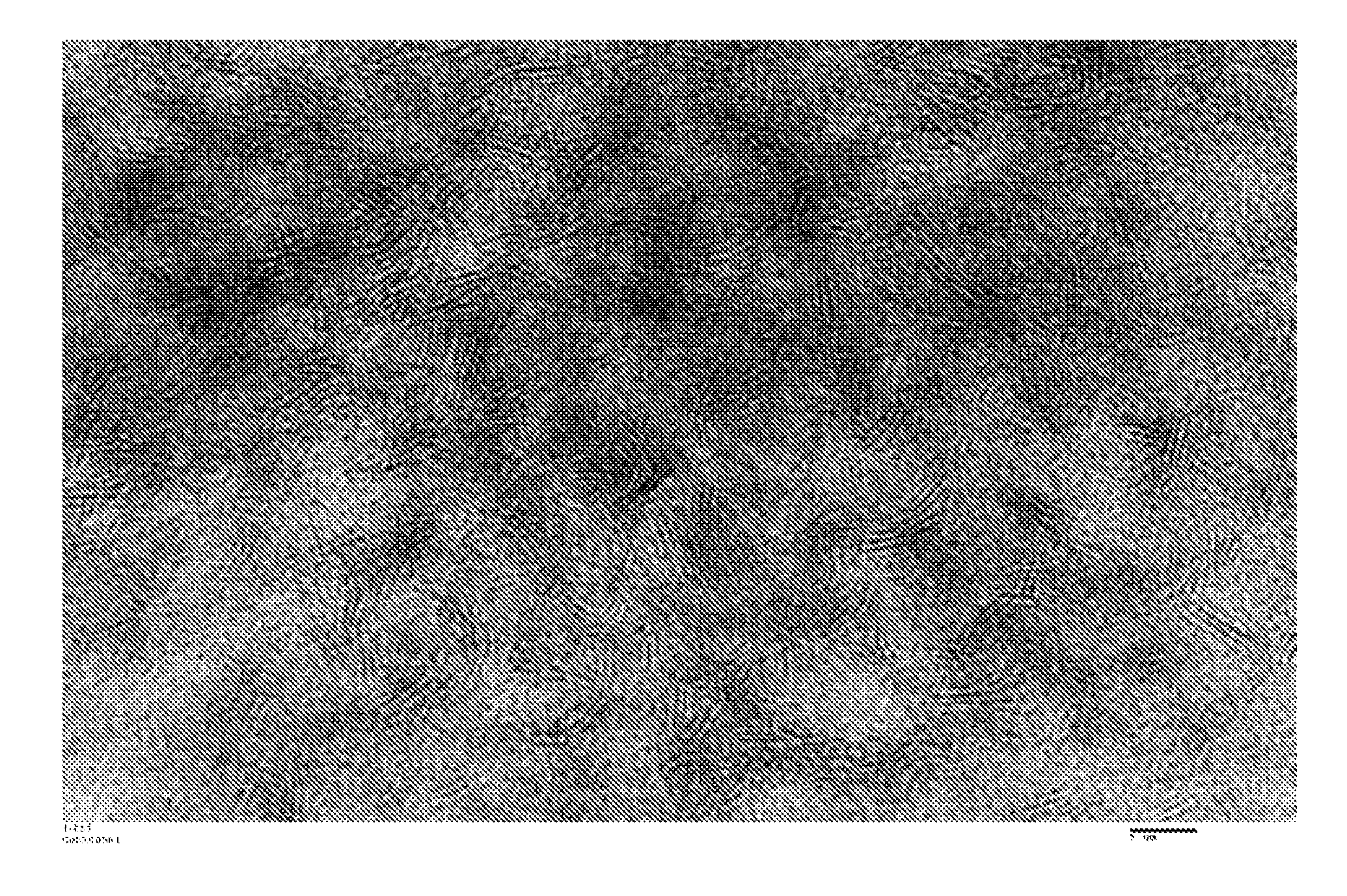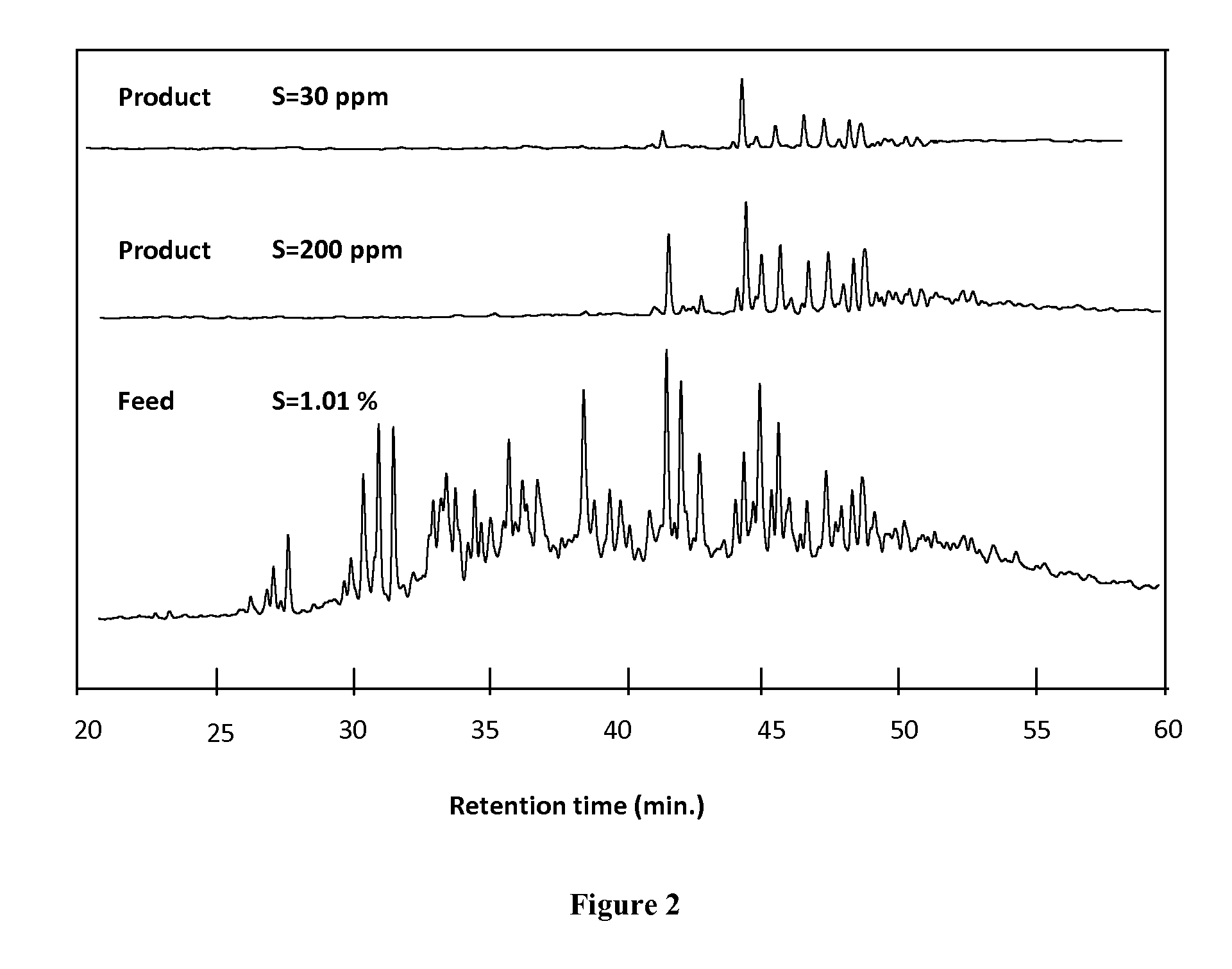Hydrotreating catalyst and process for preparing the same
a technology of hydrotreating catalyst and catalyst carrier, which is applied in the direction of catalyst activation/preparation, metal/metal-hydroxide catalyst, metal-hydroxide catalyst, etc., can solve the problem of limiting the use of titania as a catalyst carrier for hydrotreating catalysts, unable to disclose any methodology for the modification of the catalyst support, and unable to achieve the effect of hydrotreating catalysts. high performan
- Summary
- Abstract
- Description
- Claims
- Application Information
AI Technical Summary
Benefits of technology
Problems solved by technology
Method used
Image
Examples
example 1
Preparation of Hydrodesulfurization Catalyst A
[0062]1. Preparation of Alumina Support Modified with TiO2:
[0063]Pseudo-boehmite alumina powder was dried at 120° C. for 24 hours and then cooled. The LOI (Loss of Ignition) of the powder was determined by Thermogravimetry at 500° C. and found to be around 27%. The resultant dried powder (343 g, 72.9% Al2O3) was slurried with a solution of titanium isopropoxide (9.18 g, 97%) dissolved in 500 ml of isopropanol and stirred at atmospheric temperature for a period of 6 hours. The alumina material was filtered out under vacuum. The solid material thus obtained was wetted with 50 ml of demineralized water and then washed with excess of water (1.0-1.5 L). The resultant solid material was then dried at 120° C. for 24 hours to obtain the grafted alumina. Another portion of pseudo-boehmite alumina powder (17 g, 72.9% Al2O3) was peptized by contacting and mixing with dilute nitric acid (approximately 22.5 ml, 1.1 w / v %) solution. The nitric acid so...
example 2
Preparation of Hydrodesulfurization Catalyst B
[0068]Preparation of Alumina Support Modified with SiO2 and Hydrodesulfurization Catalyst B
[0069]The alumina support modified with SiO2 was prepared in the same manner as in example 1, except that solution of tetraethyl orthosilicate (TEOS) (8.84 g, 98%) dissolved in 500 ml of iso-propanol was used for grafting the alumina surface with Si species in place of the Ti precursor solution, to obtain support B.
[0070]The catalyst support thus obtained was analyzed SiO2 content, pore volume, average pore diameter and pore size distribution and the results are given in Table 1.
[0071]The catalyst formulation was prepared as described in example 1 with metal contents of 3.5% wt Ni as NiO, 16.5% wt Mo as MoO3 and 6.5% wt P as P2O5, each based on weight of the oxide form of catalyst, on the above alumina support modified with SiO2, to obtain Catalyst B.
example 3
Preparation of Hydrodesulfurization Catalyst C
[0072]Preparation of Alumina Support Modified with TiO2 and SiO2 and Hydrodesulfurization Catalyst C.
[0073]The alumina support modified with SiO2 was prepared in the same manner as in example 1, except that a mixed solution of titanium isopropoxide (4.59 g, 97%) and tetraethyl orthosilicate (TEOS) (4.42 g, 98%) dissolved in 500 ml of iso-propanol was used for grafting the alumina surface with both the Si and Ti species, to obtain support C.
[0074]The catalyst support thus obtained was analyzed SiO2 and TiO2 content, pore volume, average pore diameter and pore size distribution and the results are given in Table 1.
[0075]The catalyst formulation was prepared as described in example 1 with metal contents of 3.5% wt Ni as NiO, 16.5% wt Mo as MoO3 and 6.5% wt P as P2O5, each based on weight of the oxide form of catalyst, on the above alumina support modified with TiO2 and SiO2, to obtain catalyst C.
PUM
| Property | Measurement | Unit |
|---|---|---|
| Fraction | aaaaa | aaaaa |
| Fraction | aaaaa | aaaaa |
| Fraction | aaaaa | aaaaa |
Abstract
Description
Claims
Application Information
 Login to View More
Login to View More - R&D
- Intellectual Property
- Life Sciences
- Materials
- Tech Scout
- Unparalleled Data Quality
- Higher Quality Content
- 60% Fewer Hallucinations
Browse by: Latest US Patents, China's latest patents, Technical Efficacy Thesaurus, Application Domain, Technology Topic, Popular Technical Reports.
© 2025 PatSnap. All rights reserved.Legal|Privacy policy|Modern Slavery Act Transparency Statement|Sitemap|About US| Contact US: help@patsnap.com



